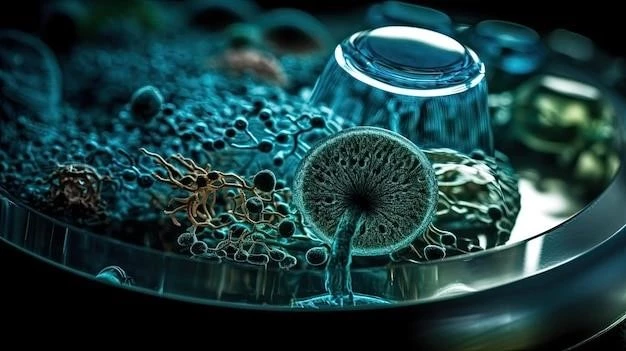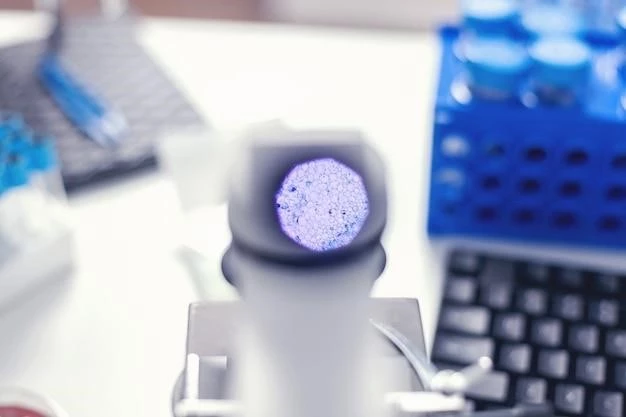Histiocytosis, Non-Langerhans-Cell
This article will provide a comprehensive overview of Non-Langerhans-Cell Histiocytosis. It will delve into the types, diagnosis, treatment, prognosis, bone involvement, skin manifestations, liver and lung involvement, blood abnormalities, inflammation, genetic factors, and tumor development associated with this rare systemic condition.
Introduction to Non-Langerhans-Cell Histiocytosis
Non-Langerhans-Cell Histiocytosis, also known as histiocytosis, encompasses a group of rare disorders characterized by the proliferation of histiocytes. These disorders can affect various organs, leading to a systemic condition. Unlike Langerhans cell histiocytosis, which involves a specific type of white blood cell, non-Langerhans-cell histiocytosis typically involves cells other than Langerhans cells.
The exact cause of non-Langerhans-cell histiocytosis remains unknown, but it is believed to involve genetic mutations that result in uncontrolled cell growth. These mutations can cause the abnormal accumulation of histiocytes in different tissues, leading to the formation of tumors or lesions. The diagnosis of non-Langerhans-cell histiocytosis requires a thorough evaluation, often involving tissue biopsies and imaging studies.
Treatment approaches for non-Langerhans-cell histiocytosis may include chemotherapy, targeted therapies, or surgery, depending on the extent and severity of the disease. Prognosis can vary, with some cases responding well to treatment while others may be more challenging to manage. Research into the genetic factors and mechanisms underlying tumor development in non-Langerhans-cell histiocytosis is ongoing to improve diagnosis, treatment, and outcomes for affected individuals.
Types of Non-Langerhans-Cell Histiocytosis
Non-Langerhans-cell histiocytosis encompasses a spectrum of rare disorders with distinct clinical and pathological features. These disorders include Rosai-Dorfman disease (sinus histiocytosis with massive lymphadenopathy), Erdheim-Chester disease, juvenile xanthogranuloma, and hemophagocytic lymphohistiocytosis. Each type of non-Langerhans-cell histiocytosis presents unique characteristics, such as age of onset, affected tissues, and disease course.
Rosai-Dorfman disease is characterized by painless enlargement of lymph nodes, skin lesions, and extranodal involvement, often affecting the head and neck region. Erdheim-Chester disease primarily involves the long bones, retroperitoneum, and cardiovascular system, leading to bone pain, cardiovascular complications, and xanthelasma. Juvenile xanthogranuloma typically presents as skin lesions in children and may involve internal organs. Hemophagocytic lymphohistiocytosis is a life-threatening condition caused by uncontrolled activation of the immune system.
Each type of non-Langerhans-cell histiocytosis requires a tailored diagnostic approach and specific treatment strategies. Differentiating between these entities is crucial for guiding management decisions and predicting disease outcomes. Research continues to elucidate the underlying mechanisms of these disorders, paving the way for improved diagnostic techniques and targeted therapies to address the diverse manifestations of non-Langerhans-cell histiocytosis.
Diagnosis of Non-Langerhans-Cell Histiocytosis
Diagnosing non-Langerhans-cell histiocytosis requires a comprehensive approach involving clinical evaluation, imaging studies, and histopathological examination of tissue samples. The presentation of non-Langerhans-cell histiocytosis can vary widely depending on the specific subtype and organs involved, necessitating a multidisciplinary diagnostic strategy.
Initial assessment may include a detailed medical history, physical examination, and imaging modalities such as X-rays, CT scans, MRI, or PET scans to identify organ involvement and assess disease extent. Definitive diagnosis often relies on histopathological examination of biopsied tissue samples, which may reveal characteristic features of histiocytes and associated inflammation.
Specific immunohistochemical stains and genetic analyses can help differentiate non-Langerhans-cell histiocytosis from other conditions with similar presentations. In some cases, additional tests such as blood work, bone marrow biopsy, or cerebrospinal fluid analysis may be necessary to rule out systemic involvement and assess disease activity.
Collaboration between pathologists, oncologists, hematologists, and other specialists is essential for accurate diagnosis and appropriate management of non-Langerhans-cell histiocytosis. Advances in diagnostic techniques, including molecular profiling and imaging modalities, continue to enhance our ability to identify and characterize these rare systemic disorders, leading to more personalized and effective treatment strategies.
Treatment Approaches for Non-Langerhans-Cell Histiocytosis
The management of non-Langerhans-cell histiocytosis involves a tailored approach based on the specific subtype, extent of organ involvement, and individual patient characteristics. Treatment strategies aim to control cell proliferation, reduce inflammation, alleviate symptoms, and improve overall prognosis.
Chemotherapy regimens, such as cytarabine, cladribine, methotrexate, or vinblastine, may be used in systemic cases of non-Langerhans-cell histiocytosis to target aberrant cell proliferation. Targeted therapies, including BRAF inhibitors for cases with specific mutations, can provide more precise treatment options.
In cases where localized lesions are present, surgery may be considered to remove tumors or alleviate organ compression. Radiation therapy can also be utilized to treat isolated or unresectable lesions, particularly in bone involvement. Additionally, corticosteroids and immunomodulatory agents may be prescribed to reduce inflammation and modulate immune responses.
Regular monitoring and follow-up evaluations are essential to assess treatment response, manage side effects, and adjust therapy as needed. Multidisciplinary care involving oncologists, hematologists, surgeons, and other specialists is crucial to optimize treatment outcomes and address potential complications.

Ongoing research into novel therapeutic approaches, genetic factors influencing disease progression, and immune modulation strategies promises to enhance the efficacy and safety of treatments for non-Langerhans-cell histiocytosis. Collaborative efforts among healthcare providers, researchers, and patient advocacy groups are vital to advance our understanding and management of this complex and rare disorder.
Prognosis and Outlook for Patients
The prognosis for patients with non-Langerhans-cell histiocytosis varies depending on the specific subtype, disease severity, extent of organ involvement, and response to treatment. While some individuals may experience favorable outcomes with appropriate therapy, others may face challenges due to complications or disease progression.
Early diagnosis and initiation of treatment can significantly impact prognosis, as timely interventions aim to control cell proliferation, reduce inflammation, and prevent organ damage. Response to chemotherapy, targeted therapies, or surgical interventions can influence long-term outcomes and quality of life for affected individuals.
Factors such as the presence of comorbidities, systemic symptoms, and response to initial treatments play a crucial role in determining the overall outlook for patients with non-Langerhans-cell histiocytosis. Close monitoring, regular follow-up visits, and adherence to treatment recommendations are essential for managing the disease and optimizing prognosis.
Research into novel therapeutic approaches, genetic markers of disease progression, and predictive factors for treatment response continues to shape the future outlook for patients with non-Langerhans-cell histiocytosis. Collaborative efforts among healthcare providers, researchers, and patient support networks are key to improving outcomes, enhancing quality of life, and advancing our understanding of this rare and complex disorder.
Bone Involvement in Non-Langerhans-Cell Histiocytosis
Bone involvement is a common manifestation of non-Langerhans-cell histiocytosis, with diseases like Erdheim-Chester affecting the long bones, pelvis, spine, and skull. Patients may present with bone pain, fractures, or skeletal deformities due to the infiltration of histiocytes into bone tissue.
Imaging studies, such as X-rays, CT scans, or MRI, play a crucial role in assessing bone lesions and determining the extent of skeletal involvement. Bone biopsies may be necessary to confirm the diagnosis and differentiate non-Langerhans-cell histiocytosis from other bone disorders.
Treatment of bone involvement in non-Langerhans-cell histiocytosis may involve a multidisciplinary approach, including chemotherapy, targeted therapies, surgical interventions for bone lesions, or radiation therapy for unresectable tumors. The goal of treatment is to reduce inflammation, alleviate pain, prevent fractures, and preserve bone structure and function.
Long-term management of bone involvement requires regular monitoring of disease progression, bone health assessments, and rehabilitation services to address functional impairments. Research efforts continue to explore new treatment modalities and genetic factors influencing bone pathology in non-Langerhans-cell histiocytosis to improve clinical outcomes and quality of life for affected individuals.
Skin Manifestations of Non-Langerhans-Cell Histiocytosis
Skin manifestations are a common feature of non-Langerhans-cell histiocytosis, with disorders like juvenile xanthogranuloma presenting as skin lesions in children. Patients may exhibit papules, nodules, or plaques on the skin, which can vary in size, color, and distribution depending on the subtype of histiocytosis.
Clinical examination and dermatological assessments are essential for evaluating skin lesions, documenting changes over time, and identifying associated symptoms such as itching, pain, or ulceration. Skin biopsies may be performed to confirm the presence of histiocytes in the affected skin tissue.
Treatment of skin manifestations in non-Langerhans-cell histiocytosis may involve topical corticosteroids, immunomodulatory agents, or targeted therapies to reduce inflammation, promote lesion regression, and improve cosmesis. In cases of extensive skin involvement, systemic treatments such as chemotherapy or immunosuppressive drugs may be indicated.
Long-term management of skin manifestations requires regular skin monitoring, wound care, and dermatological follow-up to prevent complications such as infection, scarring, or pigment changes. Patient education regarding skin protection, self-examination, and symptom recognition is crucial for early intervention and optimal outcomes.
Research into the molecular pathways underlying skin pathology in non-Langerhans-cell histiocytosis continues to drive the development of novel therapeutic strategies and targeted treatments to address the diverse spectrum of skin manifestations associated with these rare systemic disorders.
Liver and Lung Involvement in Non-Langerhans-Cell Histiocytosis
Liver and lung involvement in non-Langerhans-cell histiocytosis can present significant challenges in diagnosis and management. Diseases like Erdheim-Chester may affect the lungs, leading to symptoms such as cough, shortness of breath, or chest pain due to histiocytic infiltration.
Diagnostic evaluation of liver and lung involvement may include imaging studies like CT scans, PET scans, or pulmonary function tests to assess organ function and identify lesions. Biopsies of liver or lung tissue may be necessary to confirm the diagnosis and guide treatment decisions.
Treatment of liver and lung manifestations in non-Langerhans-cell histiocytosis may involve a combination of systemic therapies, including chemotherapy, immunomodulators, and targeted agents to reduce inflammation, prevent organ damage, and improve respiratory function.
Ongoing monitoring of liver and lung function, imaging studies, and symptom assessment is essential for evaluating treatment response, detecting disease progression, and managing potential complications such as fibrosis or organ failure. Collaboration between respiratory specialists, hepatologists, oncologists, and other healthcare providers is crucial for comprehensive care and optimizing outcomes for patients with liver and lung involvement in non-Langerhans-cell histiocytosis.
Blood Abnormalities and Inflammation in Non-Langerhans-Cell Histiocytosis
Blood abnormalities and inflammation are key features of non-Langerhans-cell histiocytosis, reflecting the systemic nature of these disorders. Patients may exhibit abnormalities in blood cell counts, cytokine levels, and immune function, indicating dysregulation of hematopoietic and inflammatory pathways.
Laboratory tests such as complete blood counts, blood chemistry panels, and immune profiling can help detect abnormalities in blood cells, liver enzymes, and inflammatory markers. These assessments aid in disease monitoring, evaluating treatment response, and detecting secondary complications.
Treatment of blood abnormalities and inflammation in non-Langerhans-cell histiocytosis may involve immunosuppressive agents, corticosteroids, or targeted therapies to modulate immune responses, reduce inflammation, and restore hematological parameters. Disease-modifying agents targeting cytokine pathways may also be beneficial in controlling systemic manifestations.
Regular monitoring of blood parameters, inflammatory markers, and organ function is essential for assessing treatment efficacy, managing potential side effects, and preventing disease recurrence. Multidisciplinary collaboration between hematologists, immunologists, and rheumatologists is crucial for coordinating care and addressing the complex interplay between blood abnormalities and inflammation in non-Langerhans-cell histiocytosis.
Genetic Factors and Tumor Development in Non-Langerhans-Cell Histiocytosis
Genetic factors play a critical role in the pathogenesis of non-Langerhans-cell histiocytosis, influencing cell proliferation, immune responses, and tumor development. Somatic mutations in genes regulating cell growth, apoptosis, and immune activation have been implicated in the development of these rare systemic disorders.
Advanced genetic sequencing technologies have identified recurrent mutations in key signaling pathways, such as MAPK and PI3K-AKT, contributing to histiocytic proliferation and survival. Understanding the genetic landscape of non-Langerhans-cell histiocytosis is essential for accurate diagnosis, risk stratification, and targeted treatment approaches.
Tumor development in non-Langerhans-cell histiocytosis can involve the formation of lesions in various organs, including bone, skin, liver, and lungs. These lesions may present as focal masses, nodules, or infiltrative growth patterns, necessitating histopathological evaluation to differentiate benign from malignant processes.
Therapeutic strategies targeting genetic alterations, such as BRAF inhibitors for mutations in the BRAF gene, have shown promising results in select patients with non-Langerhans-cell histiocytosis. Personalized treatment approaches based on genetic profiling are increasingly being explored to improve outcomes and reduce treatment-related toxicities.
Ongoing research into the genetic mechanisms driving tumor development, immune dysregulation, and treatment resistance in non-Langerhans-cell histiocytosis is essential for advancing precision medicine and developing novel therapeutic interventions. Collaborative efforts among geneticists, oncologists, and researchers are critical for unveiling the genetic underpinnings of non-Langerhans-cell histiocytosis and translating these discoveries into targeted therapies for patients with these complex and rare disorders.
